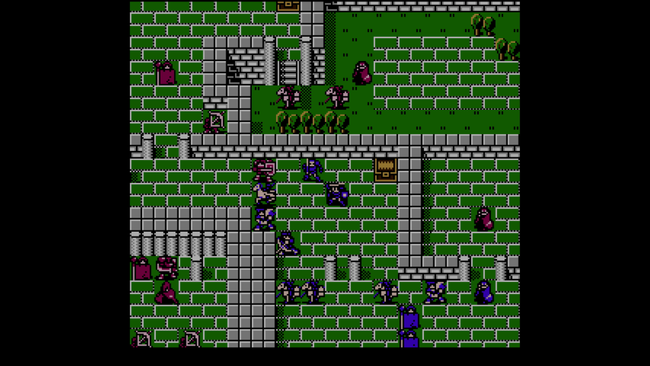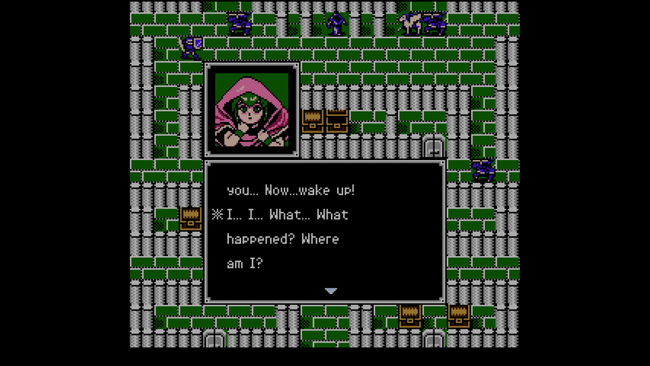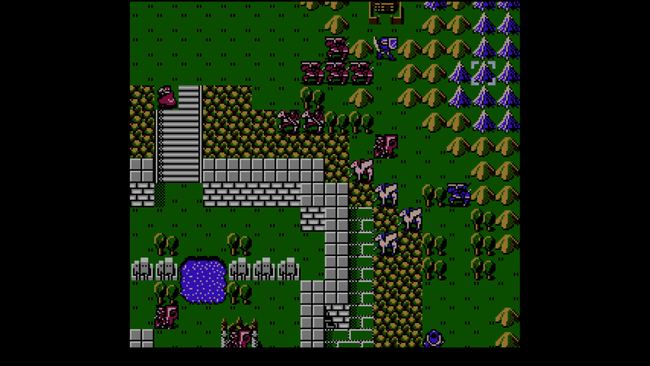Fire Emblem: Shadow Dragon & the Blade of Light is a nice offering, but its limited release is silly
As corny as it is to admit, I love academically checking out old, classic RPGs to see how some fundamental concepts, components, or franchises began life in this genre.
Like many in the West, I first played Fire Emblem with the release of Fire Emblem: Blazing Sword on Game Boy Advance in 2003, and I have since played nearly every mainline title in the series. However, I've never taken the time to check out the franchise's earliest entries on the Famicom, such as the first game starring Marth and his quest to defeat the Dark Dragon Medeus.
Nintendo's announcement of an official English localization for Fire Emblem: Shadow Dragon & the Blade of Light was certainly not something anyone expected, but I was eager to check it out to learn more about a series that had become one of my favorites. Well, mostly eager.

This shouldn't come as a surprise, but Shadow Dragon & the Blade of Light does not have the 30 years of experimentation, refinements, or other polish now seen in the modern entries. There is very little "quality of life" to be found, even in the most basic sense for gameplay components we might take for granted now. You cannot easily check a unit's movement range (just their numerical movement stat). There is no battle forecast to show you how much damage you'll deliver and receive before you initiate a battle. There are no helpful menu tooltips to tell you what certain items do (I assume maybe a game manual explained some of these things originally).
Despite all this, I found the game more playable than I expected it to be. If you've played some of the Game Boy Advance Fire Emblem entries, then Shadow Dragon & the Blade of Light should actually feel largely familiar to you, just considerably stripped down. The basic structure is the same, most items have been given the same (or similar) names, and most things generally work how you'd expect them to. After a little bit of time getting used to the style, I found myself cruising through the game.
I think as long as you are heading into Shadow Dragon and the Blade of Light with the proper mindset, acknowledging that the game is 30 years old and essentially established the series from scratch, there is fun to be had. While more basic, the tactical elements exhibited here are still quite solid and I personally find the retro visual style a bit endearing. However, it's worth noting that support between units, now a staple in the series, is absent here, as the mechanic would not be introduced until the 4th entry in Genealogy of the Holy War (and fleshed out conversations not until the 6th entry in Binding Blade.) This game is all about strategy and combat.

The Switch port does add a few key components to help make revisiting this classic go quite a bit smoother. The game automatically places a save state at the beginning of each turn, so you can easily rewind a few turns if things start to turn sour (up to 20 turns in the past). You can also make a save state at any other time at will, which certainly can help if you are making a risky move. Of course, these save states can also be readily and often abused if you want to spend some time in the game arenas gaining money and EXP. It's a little cheap, perhaps, but these tools make visiting a 1990 title in 2020 more palatable.
Also, you can run the game at 2x speed. This is nice practically, but I wish it didn't also speed up the music too, as it is actually a bit annoying.
As for Fire Emblem: Shadow Dragon & the Blade of Light itself, I enjoyed playing through it more than I expected to. There are a few clear issues, of course. The game is generally not well-balanced, for one. Certain characters will completely outclass a gaggle of others to the point where you are effectively handicapping yourself if you use poor units. The game throws an absolute ton of units at you that are, plainly, worthless. Perhaps when implementing permadeath for the first time, the developer wanted to be absolutely certain that the player had spare units just in case their roster found itself depleted. Additionally, your general objective in each map is the same, to capture a throne with Marth. The storyline stays pretty simple too, which usually just involves Marth liberating cities and castles from the forces of evil.
I can't fault these issues too much though, considering this is literally the first Fire Emblem game where even basic elements had to be established for the first time. This release is largely a look back at how things came to be at the outset, and I can surely appreciate how the series has grown from here.
I won't claim to be an expert who can tell you how faithful of an emulation this port is of the Famicom original. What I can tell you is that the game offers two display modes: Normal and Pixel Perfect. The Normal mode appears to stretch the image horizontally slightly, while Pixel Perfect maintains an aspect ratio of what I would expect to see for a Famicom game. I decided to stick with Pixel Perfect, and that's how the screenshots in this article are formatted. However, it does seem like this release is a little bit less bright than the original game, or even what is available on the JP Nintendo Switch Online subscription. It's something you get used to, but still a strange oddity to note.

Now, it's somewhat asinine that I even have to address such a needless arbitrary caveat, but as I was playing through Shadow Dragon & the Blade of Light, I couldn't help but think about how this product is only going to be available to purchase for four months, apparently. Nintendo gives no reason for this limitation other than that the game "will only be available to purchase until the end of the franchise’s 30th anniversary on March 31, 2021".
This is just silly. This isn't some limited edition package where only so many quantities can be made. There should not be any legal or licensing concerns to keep the game on sale. That's not to say this is a bewildering stipulation; the strategy here is quite apparent. There is probably not a vast audience of people who are immediately interested in purchasing a 30-year-old game with the same scholastic mindset I have. However, make it a scarce release and more people will likely be coerced to make the purchase else they miss out forever.
This strategy is especially offputting when the game is available on the Japanese Nintendo Switch Online service already. It's also strange when you see companies like Square Enix releasing the first three titles in the Mana series, or the upcoming first three titles in the SaGa series for the same platform, or the many Sega Ages releases like Phantasy Star along with multiple Genesis/MegaDrive collections. These might be limited as retail releases, but of course, there are currently no limitations on selling these digitally. It remains to be seen how Nintendo Switch's eventual successor will handle digital Switch titles going forward, but that's a different topic for another time. (I still lament the loss of Virtual Console, personally).
I don't really have a nuanced thesis here and maybe I'm stating the obvious in futility. I greatly appreciate Nintendo finally giving a franchise classic an official release in the West, and I enjoyed my time experiencing the foundational entry to one of Nintendo's now-tentpole releases, but knock it off with the limited release nonsense. Treating a part of your classic games catalog like a gimmicky marketing item is tasteless at best.